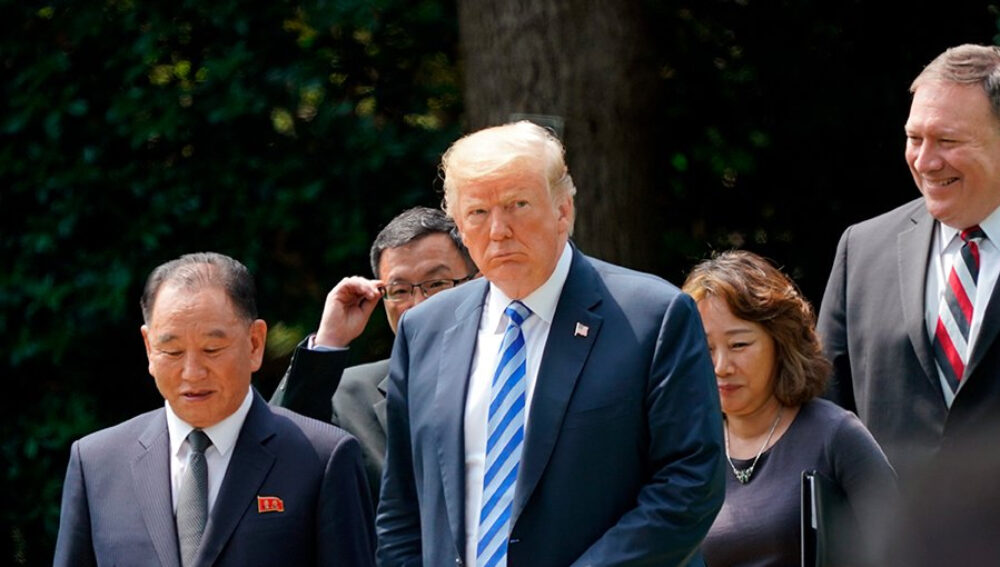Twelve months ago, it would have been inconceivable to contemplate Donald Trump gearing up to meet, face to face, with his political nemesis, North Korean leader Kim Jong‑un. And yet, here we are today doing exactly that. Barring any last-minute mishaps, the two leaders, known to each other in less friendly times as ‘Little Rocket Man’ and ‘the Dotard’, will meet at a hotel on Singapore’s Sentosa Island on 12 June.
I have long held the view that diplomacy is the only way forward in solving the Korean crisis. And so, it would seem reasonable to argue that the Trump–Kim summit, following on from the recent series of inter-Korean summits and igniting a flurry of high-level regional diplomatic engagements, should be welcomed as a positive and long-overdue step towards resolving the Korean crisis.
But I’m not convinced. The on-again, off-again summit is short on substance, and as many have already noted, its objectives are ambiguous. Meanwhile the political circling of Kim Jong‑un, in particular by Russia’s foreign minister, Sergey Lavrov, and Syria’s embattled president, Bashar al‑Assad, smacks of cartoonish opportunism. The stakes for the region are high.
To be sure, a successful summit could shift the political and diplomatic trajectory of the Northeast Asian region, bringing peace to the Korean peninsula, normalising diplomatic relations and possibly even leading to the dismantling of North Korea’s nuclear arsenal. Failure, by contrast, could be catastrophic. It’s just not clear where the outcomes of this summit will land.
Please click here to read the full “Diplomacy beyond the spectacle of the summit” article at The Strategist, written by Griffith Asia Institute Director, Professor Caitlin Byrne.








